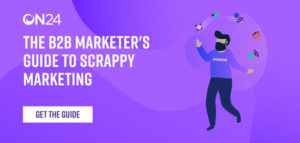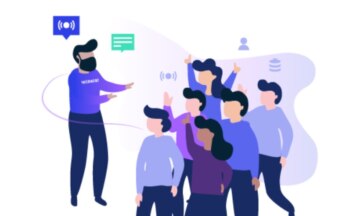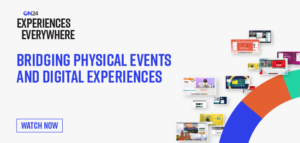This year, more companies than ever have embraced digital technology. Even industries that have traditionally been slower to adopt — such as manufacturing — are turning to digital business. McKinsey & Company reported that 96% of B2B companies shifted their go-to-market model during Covid-19, and most plan to keep their new model in place for a year or longer.
This tectonic shift has ushered in a new business reality. Digital transformation is over; now, companies operate under the digital imperative.
This article was originally published on Forbes.com. Shared with the author’s permission.
Many companies now champion digital-first, data-driven strategies. In reality, it’s not enough to flip the digital switch. Nearly any company can implement technology — most already have. Digital technology allows businesses to reach more people than ever more efficiently. However, many companies also run the risk of succumbing to the paradoxes of digital scale. If they’re not careful, they can lose personal connections, become detached from their customers and prospects, and ultimately, hinder their own growth.

I believe strategies in today’s digital era should be guided by a people-first mindset. Here’s how companies can put people first in today’s technology-driven world.
1. Remember that digital doesn’t have to be superficial.
In the era of automation, many aspects of business have grown impersonal. With the touch of a button, marketers can fire off a mass email to thousands of recipients without any personalization beyond putting the right name in the subject line. We’re all too familiar with blanket communications, and if you’re anything like me, most of those blasts are punted to the trash folder without so much as a cursory scan.
Somewhere along the way, we sacrificed human engagement for digital scale. We abandoned the pursuit of connection and, in some cases, let automation replace some of the old personal touches. Instead of conversations and long-term relationships, we’ve grown distracted by tracking downloads and clicks. However, it doesn’t need to be this way.
A people-first mindset brings human engagement back into the mix. This doesn’t mean throwing out technology; it means using digital advertising and automation for its true purpose: getting people to a moment of engagement. By engaging audiences with interactive, multimedia, multitouch experiences, companies can resurrect person-to-person connection and reopen the dialogue with their customers — at scale. Technology and human engagement don’t need to be mutually exclusive; instead, we should embrace technology to scale human engagement in ways never before possible.
2. Don’t just track — listen and learn from your audience.
One of the most straightforward ways to adopt a people-first mindset is by listening. While many companies claim to be data-driven, it’s often at a superficial level. Companies track page visits, downloads, email opens, purchase history — the activity list goes on and on.
A people-first mindset prioritizes richer engagement data collected through conversation directly from the source: your audience. Through interactions like polling responses or demo requests, as well as direct communication like questions or chats, your customers and prospects provide a direct window into their behavior and their thinking — not just an activity log. These rich insights reveal more about prospects than the superficial data points marketers have come to rely on, arming marketers with insights to create more personalized journeys and a stronger pipeline. In fact, in research conducted by my company, 93% of top-performing marketers agree that stronger engagement results in a stronger pipeline.
Data-driven decisions are invaluable for your business, but decisions can’t be driven solely by traditional metrics like page views. Data can support a people-first approach, but only when companies truly listen to and engage with prospects and customers and leverage these insights for better conversations and connections.
3. People-first demands personalization across touch points.
When prospects and customers share personal information with your company, they expect that information will be put to good use; in fact, Accenture found that 83% of consumers are willing to share their data in exchange for a personalized experience. As customers impart invaluable insights — interests, priorities, goals, budget, etc. — your company has a responsibility to leverage this information to create a better, more personalized digital experience.
This doesn’t just mean cutting in with the appropriate resources or product demonstrations at various stages of the buying process. Tailoring the buyer journey is certainly important to pique a prospect’s interest, but marketers are now responsible for more of the funnel than ever before. A people-first mindset requires this level of personalization and attention to detail from introduction through long past acquisition. In fact, according to our research, 89% of top-performing marketers say their teams create dedicated materials that support the entire customer journey — not just acquisition. An effective people-first approach doesn’t end when the contract ink dries; it continues throughout the entire relationship.
There are many benefits to a digital-first approach to business, but there can also be pitfalls if not done right. To capitalize on the opportunity of digital, companies need to adopt a people-first approach to business. Only by keeping human connection front and center can companies embrace the benefits of digital without becoming detached and impersonal.

